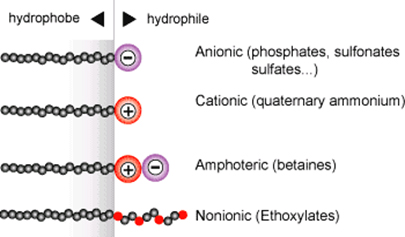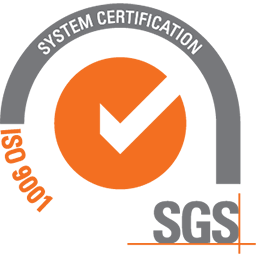HISTORY OF “DRY-CLEANING”
The first evidence of solvent wash dates back to the Roman Empire, when people used ammonia and clay to wash togas.
Instead modern dry-cleaning was invented in France mid 19th century by Jean-Baptiste Jolly, who used a mix of gasoline and kerosene as a solvent. Jolly discovered the cleaning properties of these solvents after accidentally spilling some kerosene on his table cloth. In fact Jolly saw that it appeared cleaner after the accident.
SOLVENTS
The first solvent used for dry-cleaning was a mix of gasoline derivatives, but its problem was the high level of flammability and the explosive potential.
Therefore people started to use chlorinate solvents, which were inert and “less dangerous”. At the beginning they used Chlorofluorocarbons and then TCE (trichloroethylene). As time went by, these two solvents were abandoned, because the first one was considered harmful for the ozone layer, whereas the second was suspected of being carcinogenic.
In the 1950s Tetrachloroethylene (also called perchloroethylene) became popular.
Since then many different machines have been produced to take advantage of the cleaning power of this solvent. This molecule is inert at a chemical level and high-boiling and has a strong degreasing power, but unfortunately it is still dangerous for human health.
THE NEW SOLVENTS
The doubts about the dangerousness and carginogenicity of perc have lead to the search for other solutions:
• HYDROCARBONS (KWL)
Mix of paraffinic hydrocarbons characterised by a high boiling point and a delicate action on fibres. Two problems of these solvents are their flammability and low degreasing power.
• CARBON DIOXIDE
If this solvent is used in its liquid form, it is inert and not dangerous (unless it saturates the room). It has a good degreasing power, but it is too expensive to be produced on the premises.
• SILICON SOLVENTS
Eco-friendly and totally inert solvents. Compound deriving from Cyclosiloxanes. Good degreasing power, but significant managing costs.
• SENSENE TM
Cutting-edge solvent made from modified alcohol. It is naturally biodegradable and it has a low toxicity. It has a good degreasing power and it is delicate on garments. Moreover it has a low dangerousness for operators.
PERCHLOROETHYLENE
Perchloroethylene is a chlorinated alkene with the following features:
|
CHARACTERISTIC |
WATER |
PERCHLOROETHYLENE |
|
Density (g/lt) |
1,0 |
1,62 |
|
Steam Pressure at 20°C (hPa) |
23,4 |
18,9 |
|
Boiling Point (°C) |
100 |
121,1 |
|
Molecular Weight (g/mol) |
18 |
166 |
|
Surface Tension (mN/m) a 25°C |
73 |
32 |
|
Kauri-Butanol Index |
- |
90 |
|
Lower Explosion Limit at 20°C |
Non flammable |
Non flammable |
Perchloroethylene is a solvent compatible with most fabrics, but it has problems with some synthetic fibres (such as Polyurethanes), because they are soluble in it.
Its chemical characteristics as a non polar (apolar) molecule make it compatible with some natural fibres that are not suitable for laundry, such as wool and silk.
By observing Kauri-Butanol index, that shows the “degreasing power”, we can see that Perc has a high degreasing power, whereas water alone hasn’t any degreasing power. Instead, it isn’t active on tannin stains and on the ones that are soluble in water (sweat, grass, tomato, etc.). Therefore it needs detergents that can solubilize this kind of molecules.
DETERGENTS
Dry-cleaning detergents contain surfactants that work in the opposite way if compared to laundry detergents. In effect in this solvent surfactants point their polar heads towards (water-soluble) dirt and their apolar tails towards perc. In this way water-soluble dirt is solubilised.

The surfactants contained in dry-cleaning detergents usually are anionic and\or non ionic. Instead, for an antistatic effect it is necessary to choose cationic surfactants, but avoiding the passage in the filters during the wash, since they might clog and inactivate them.

Besides increasing the cleaning power of the wash, detergents must also improve the binding power of the solvent with water.
ANTISTATICS
Perchloroethylene is a dielectric solvent, that is Non-Conductive. During the wash the garment charges negatively and perc doesn’t manage to dissipate these charges (on the contrary they accumulate more and more). As a consequence, when washing wool clothes with other normal garments, it may happen to see evident transfers of fuzz.
Therefore it is necessary to use antistatic products to avoid this phenomenon and also make fabrics softer.
PRE-BRUSHING
Some stains are difficult for perc, such as tannin stains, since they have a high solubility in water. Therefore detergents should be added.
To completely eliminate this kind of stains, it is advisable to pre-brush with specific products. It is important to choose products that are compatible and can be rinsed in perchloroethylene.
 |
JOLLY SMAKUniversal pre-spotter for dry-cleaning, to use with a brush or by spraying it. • High effectiveness on tannin stains Jolly Smak should be used diluted in water, with a brush or by spraying it. Apply on the dirty parts of garments shortly before the wash. Product intended for professional use only. Quantity to use: Resistant fabrics: with brush 3, by spraying 6 Warning: Before using it, try the product on a hidden part of the fabric. |
WHEN TO USE DRY-CLEANING
When one has to wash delicate garments (such as wool, silk, etc.) dry-cleaning is ideal. For some synthetic clothes perchloroethylene is the best option, too.
As a general rule, you should read the label of garments and see if the producers recommend dry-cleaning (because they know all the treatments undergone by the fabric).
Perc is certainly indispensable to wash heavily soiled delicate garments (such as grease-stained clothes), because with other washes it would be more difficult to eliminate the stains while preserving the fabrics.






















